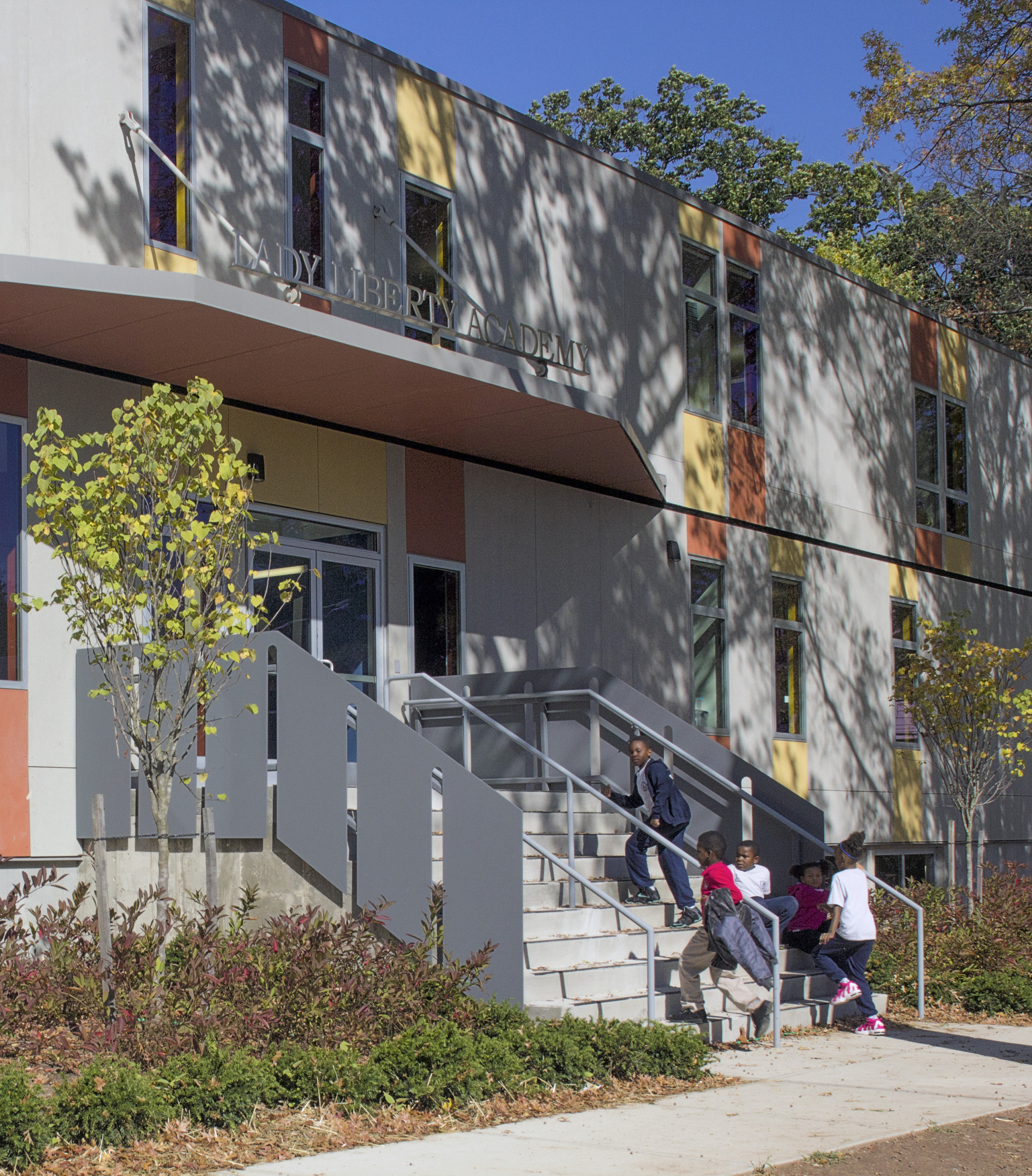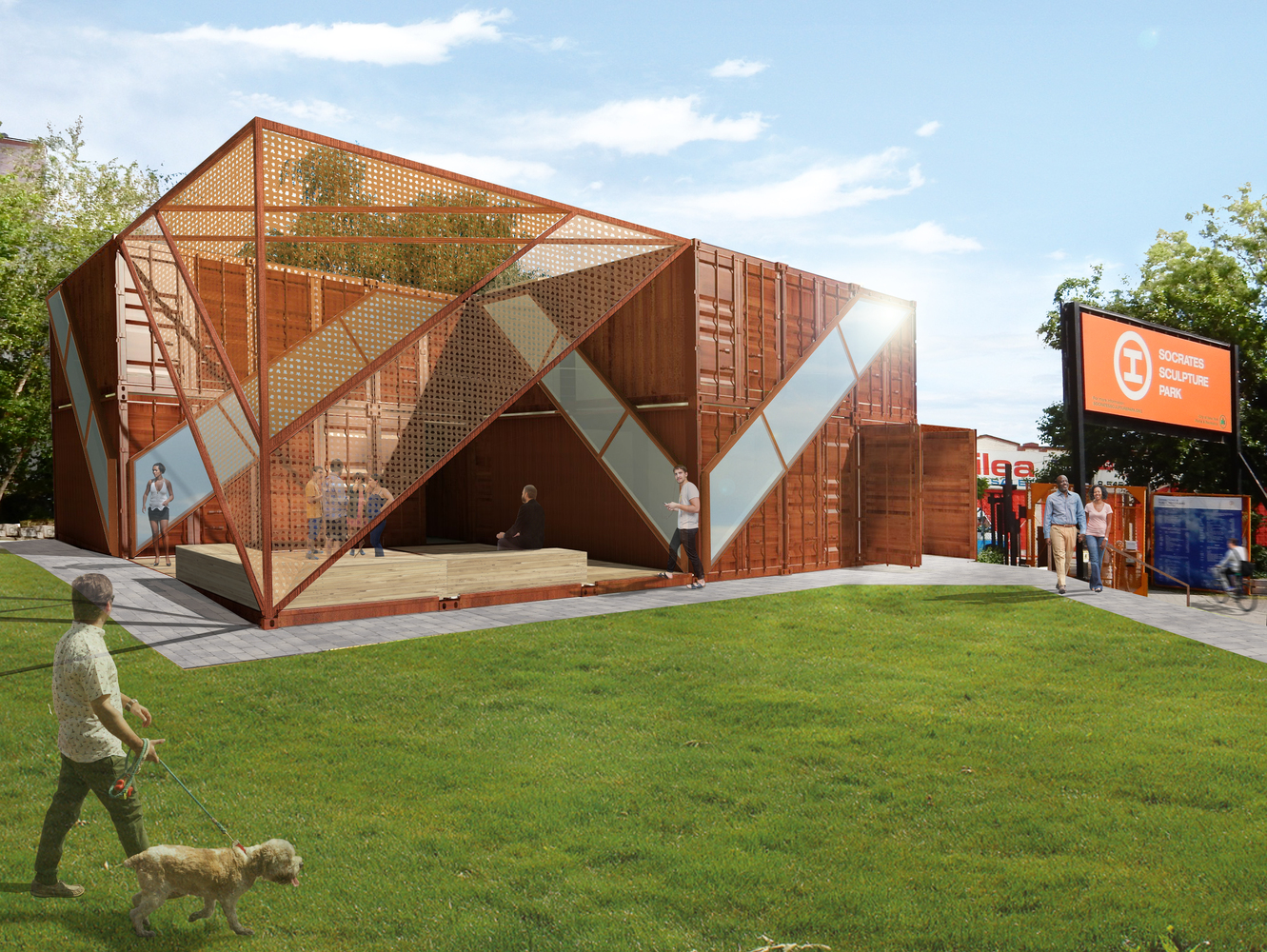Over the past 15 or so years, prefabrication and modular construction have enjoyed a newfound ubiquity as individual projects, predominately high-end and residential in nature, are splashed upon the covers of countless shelter magazines while the companies manufacturing said projects race to out-innovate each other (and secure all-important funding). Since its circa 2009-2010 ascent, the sometimes-faltering prefab boom—particularly on the West Coast—has produced its own veritable rock stars, spawned innumerable coffee table books and TV shows, and attracted major architects to design smart, sustainable, factory-built homes that appear anything but mass-produced.
Although much attention is being paid to single-family residential applications in largely suburban and semi-rural locations, other programs and typologies have also been explored to decidedly less mainstream fanfare. Notably, many cities have also seen a wave of modular mid- and even high-rise buildings join their respective skylines. Yet small-scale prefabrication that serves as an alternative to traditional construction methods within the urban public realm remains an area ripe with possibilities that have yet to be fully plumbed in America.
The recently released Designing New York: Prefabrication in the Public Realm serves as an insightful and pointedly accessible primer for those launching exploratory journeys into how prefabrication methods, when applied to small-scale infrastructure projects in dense urban environments, can yield a considerable impact on the way city-dwellers live, work, learn, and spend their free time.
Produced by New York City’s Public Design Commission (PDC) and developed as part of a research partnership between the PDC and Columbia University’s Graduate School of Architecture, Planning and Preservation (GSAPP), the 141-page Prefabrication in the Public Realm is the second entry in the PDC’s Designing New York series following Designing New York: Quality Affordable Housing, which was published in 2018.
As the report lays out in its introduction “… this document presents case studies of current best-practices for prefabrication, and analyzes both technical and logistical nuances of these systems in order to further understand their viability in New York City.”

In lieu of leaning heavily on examples of mid- and high-rise modular housing and on themes of cost- and time-savings (an inevitable conversation to be had when discussing prefab), the report instead “looks to small-scale urban infrastructure and dwelling prototypes that are woven into the public realm.”
As the report goes on to explain: “Through this shift towards public-realm focus, the intent is to frame conversations for adaptability and economical design excellence within prefabrication practices both citywide and globally. The long-term goal of this project is to give public agencies, designers, developers, and the community-at-large, tools to incorporate and advocate for quality comprehensive approaches to prefabrication across a diverse set of programs and typologies.”
“It was about a year-and-a-half ago that we were starting to see a lot of prefab and modular projects begin to come to the commission—and not necessarily for housing—but for small-scale, public realm infrastructure, whether it to be interim or permanent,” Rebecca Macklis, a senior urban design manager with the PDC, told AN of the initial decision to focus on prefab for the second edition of Designing New York.
“Things that were coming to the commission made us think it would be really great to have some exemplary projects to be able to show people—laypeople, architects, whoever—who are submitting to us, so that’s when we decided to do this and start it off the research as a seminar,” said commissioner Laurie Hawkinson, who, since 2016, has served as the architect member of the PDC. Hawkinson is also a partner at Manhattan-based firm Smith-Miller + Hawkinson and a professor of architecture at Columbia GSAPP.
“This all came out of a seminar [ Prefab, Modular, and Flatpack] that I taught at Columbia in the spring of 2019 where the students researched the projects,” added Hawkinson, noting that the student research team eventually became a paid student researcher team after the school secured a research grant. “And then they continued working on this with us to publish a web-based publication.” The seminar concluded with a roundtable discussion held at the Center for Architecture in July 2019.
Making up a bulk of the report are twenty comprehensive case studies with photos and illustrations that each feature a public realm project defined as being either prefab, modular, or flat-pack. Projects are broken down into three categories—cultural, educational, and residential—with two additional studies showcasing the use of prefabrication in response to the COVID-19 pandemic. The six lead-off case studies are projects that have been executed or are planned for New York City, while the rest of the featured projects, many leaning more experimental and more ambitious in scale, are in Europe and Asia.

The criteria for selecting projects to serve as case studies was rather straightforward. “We were looking for projects more in the public realm, so we were really trying to find civic projects,” said Hawkinson, noting that while there are housing projects included as case studies, the team wanted to avoid covering similar ground as the previous housing-focused Designing New York report. “We tried also to find projects that are in New York, to make it accessible and feasible to the audience here, and maybe elsewhere in the U.S., and then it gets broader as we start to look at the international models.”
As for the New York region-based projects, case studies include an emergency housing prototype in downtown Brooklyn (Garrison Architects); a pop-up farm prototype in Harlem (Human Habitat); a cargo container-based education/administrative space planned for Socrates Sculpture Park in Queens (LOT-EK); flood-proof modular comfort stations deployed to city beaches following Superstorm Sandy (Garrison Architects); a charter school in Newark, New Jersey (GLUCK+), and affordable/market-rate housing in the form of B2 by SHoP Architects, which was the tallest modular residential building in the world when completed in 2016 at Barclays Center in Brooklyn.
The global case studies section of Prefabrication in the Public Realm features even more eclectic projects that include, among other examples, a nomadic restaurant, an art museum, a library, a micro-dwelling, street kiosks, a concert hall, and a superlatively tall timber apartment building.
“We want to keep adding to it, of course,” said Hawkinson of the publication. “And that’s why it’s kind of an open document right now.”
The 20 initial case studies that make up Designing New York: Prefabrication in the Public Realm can be viewed in full here.











